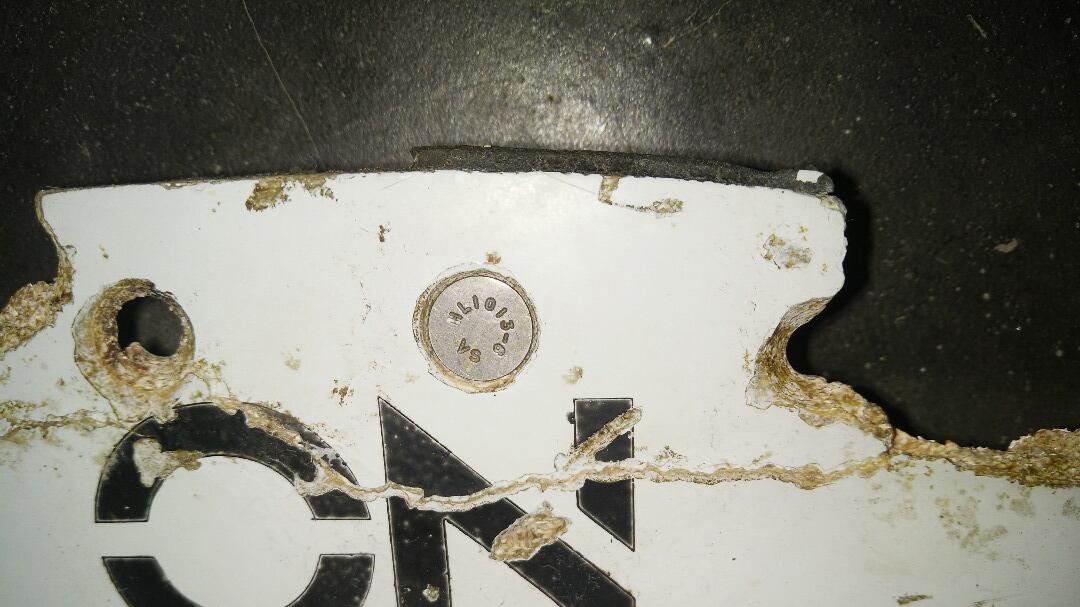Nearly two years to the day after Malaysia Flight 370 disappeared, a second piece of wreckage believed to be from the Boeing 777 is reported to have been found on the coast of Mozambique. According to CNN and the Associated Press, a U.S. official has said that the wreckage is from the horizontal stabilizer, part of the tail of the 777.
If confirmed, the location of the discovery on the east coast of Africa would be consistent with computer modeling predicting where any floating wreckage would appear. This modeling was radically revised after the only other piece of wreckage to so far appear, part of the wing called a flaperon, washed up on the island of La Réunion near Madagascar last July. Taking into account currents and winds, the model was reverse-engineered from the East African coast to indicate that the current undersea search area in the southern Indian Ocean was the probable point of impact for the airplane—and thus the right place to be searching.
Moreover, should the new wreckage prove to be from the horizontal stabilizer it could be a crucial part of the airplane’s control surfaces. That would be significant because the flaperon is also a key part of the flight controls.
Although it is relatively small, the flaperon (there is one on each wing) is very busy throughout the whole flight. It is part flap, the control surface that is lowered in a series of phases to increase lift for takeoffs and landings, and part aileron, a separate surface that moves up or down to control “roll”—to keep the wings laterally level at all speeds and altitudes or to control the degree of banking in a turn.
In December the Australian Transport Safety Bureau released a detailed reconstruction of how they believed the MH370 had ended its flight, drawing on work done by Boeing.
The report said that after the airplane had been airborne for seven hours and 38 minutes it began to run out of fuel. Its right engine flamed out first, followed by its left engine. The left engine could have continued to run for up to 15 minutes.
According to this simulation, after the second engine flamed-out the 777 glided for about 110 miles in a left-banked turn before it hit the water.
“There is no evidence to suggest that the aircraft was under a controlled flight,” The report concluded. “The evidence is inconsistent with a controlled ditching.”
The flaperon was flown to Paris and closely examined by experts from Boeing and the French accident investigation bureau. Given the final minutes of the flight as simulated by Boeing, its actions would have been essential to maintaining stability in the glide.
The flaperon was in remarkably good condition, given that it had spent nearly 17 months in the water. In photographs the only visible sign of damage is that its thinnest part, the trailing edge, was badly shredded. The forward part, where it is hinged to the wing, appeared to have made a clean break.
Estimating the forces that produced that break would be an important part of what investigators would do in order to try assess what role the flaperon was performing right up to the moment of impact. And, by looking at that, the investigators could get clues to how violent—or otherwise—the final seconds of the flight were.
The flaperon remains in Paris, where it is in the custody of French judicial authorities. It is reported that the new piece of wreckage, which could add useful information to the picture, has been flown to Malaysia for examination.
The latest report from the sea search from the ATSB, just released, says that 32,000 square miles of the search zone have been covered, out of a total of 46,000 square miles.
There is now a full complement of search vessels at the site, including a new arrival, the Dong Hai Jiu 101, financed by the Chinese government and equipped with an underwater autonomous vehicle, or AUV, operated by an American team from the Maryland-based company Phoenix International, who were deployed in the search for Air France 447 that fell into the south Atlantic in 2009.
They have the experience needed to recover debris from the Boeing 777 should it be located. They also have access to other equipment capable of working at depths of up to 20,000 feet.
The Chinese vessel filled a gap left when the Malaysian government withdrew funding for a similarly capable ship last summer. The Chinese have provided $20 million for the search this year.
At the moment the weather in the search area is favorable, but as the Southern Hemisphere winter approaches, it will deteriorate, and a completion date for the search has been set for June. If nothing has been found the search will be abandoned.





